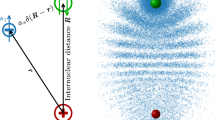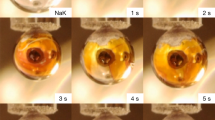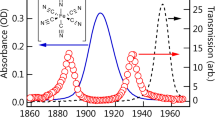Abstract
OXYGEN produced by heating potassium permanganate crystals was excited by a high-frequency (750–850 kc./sec.) discharge (output power less than 10 watts) and the spectra protographed both in the visible and in the ultra-violet regions by a Fuess glass prism spectrograph and a small (baby) quartz prism spectrograph respectively. A good many of the more intense bands of the Schumann-Runge system were found on both our plates. On attempting to extend the system, we discovered that a number of new bands present on our plates, but not reported by previous workers, fitted in the (v'v") scheme of this system. These new bands (vvac) along with our proposed quantum assignments are given in the accompanying table.
This is a preview of subscription content, access via your institution
Access options
Subscribe to this journal
Receive 51 print issues and online access
$199.00 per year
only $3.90 per issue
Buy this article
- Purchase on Springer Link
- Instant access to full article PDF
Prices may be subject to local taxes which are calculated during checkout
Similar content being viewed by others
References
Flory, Paul J., J. Chem. Phys., 4, Nos. 1–12, 23 (1936).
Author information
Authors and Affiliations
Rights and permissions
About this article
Cite this article
LAL, L. New Bands in the Schumann-Runge System of the Oxygen Molecule. Nature 161, 477–478 (1948). https://doi.org/10.1038/161477b0
Issue Date:
DOI: https://doi.org/10.1038/161477b0
This article is cited by
-
Emission Schumann – Runge O2 Bands
Nature (1948)
Comments
By submitting a comment you agree to abide by our Terms and Community Guidelines. If you find something abusive or that does not comply with our terms or guidelines please flag it as inappropriate.



